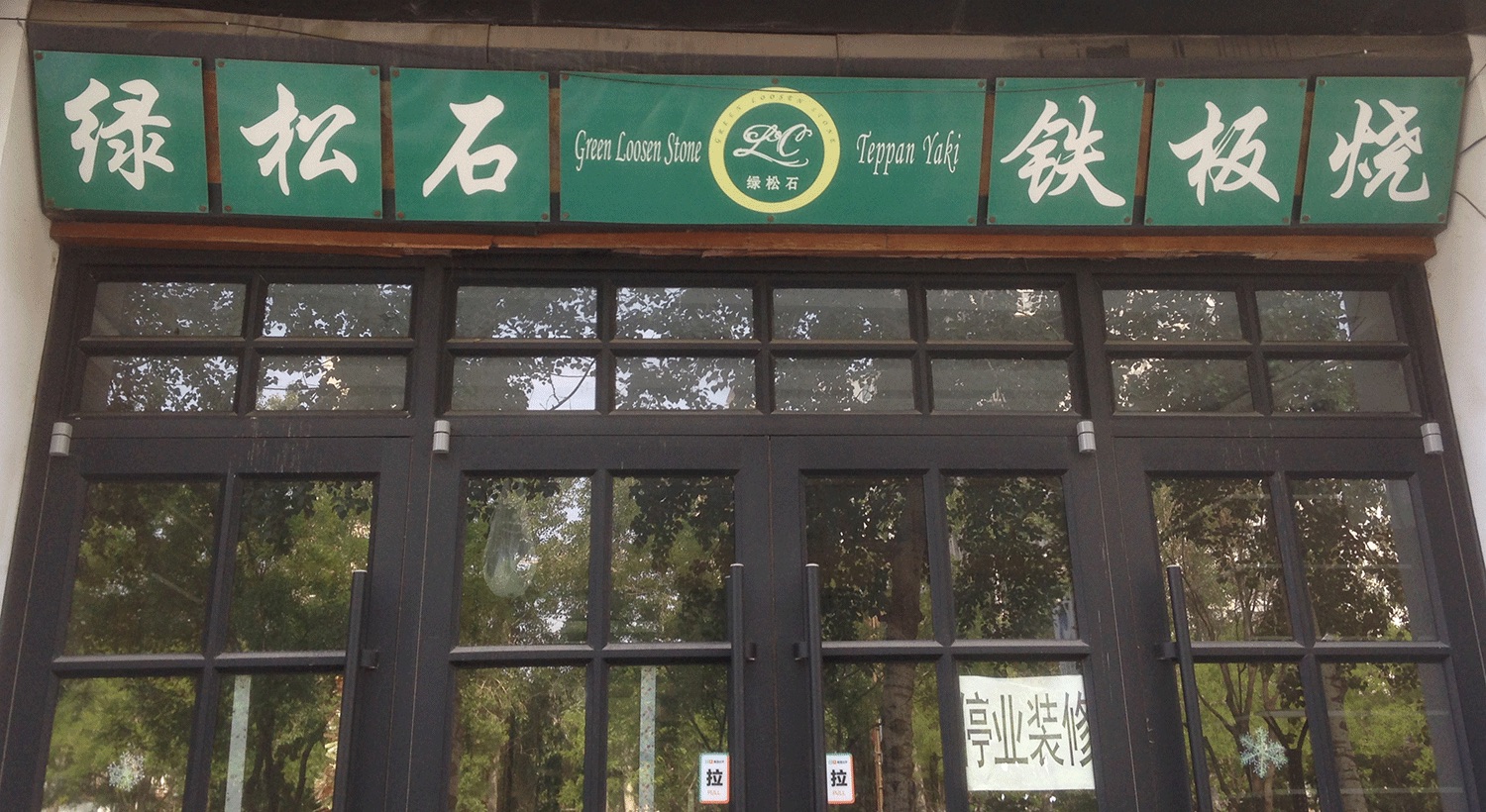Green Loosen Stone
« previous post | next post »
Photo taken by Bathrobe at a Teppanyaki restaurant (currently undergoing renovation) in Qinhuangdao (a coastal port city in northeastern Hebei province):
The source of this mistranslation is easy to solve.
The Chinese writing of the name of the restaurant says "Lǜ sōngshí 绿松石" ("Turquoise"). Fair enough, but — being in the PRC — it's written in simplified characters, which collapse homophonous sōng 松 ("pine") and sōng 鬆 ("loose") into just the single character 松 (originally meant "pine"). If this restaurant were in Taiwan, they would write the word for "turquoise" as "lǜ sōngshí 绿松石" (lit., "green pine stone") and the words for "green loose stone" as "lǜ sōngshí 绿鬆石", which means exactly that: "green loose stone", whatever that might be, so this mix-up wouldn't happen.
Since the restaurant is under renovation, this might be a good time for them to change their signage, but I'd feel sad that they have to redo the beautiful, florid, calligraphic Roman letter logo ("LC") in the middle of the circle, unless it has some other special meaning for them.

B.Ma said,
July 10, 2018 @ 5:51 am
Well, they wouldn't use 绿 in Taiwan but 綠.
松 and 鬆 are pronounced significantly differently in many topolects.
John Swindle said,
July 10, 2018 @ 9:38 pm
I'm not sure "LC" is an abbreviation of "Green Loose Stone" anyway.
John Swindle said,
July 11, 2018 @ 12:10 am
Or "Green Loosen Stone," that is.
Ellen K. said,
July 11, 2018 @ 7:52 am
Yeah, I'm wondering where the C comes from.
I also notice teppanyaki written as two words, Teppen Yaki, which really looked odd to me. Though, after seeing the meaning in Japanese (teppen = iron plate, yaki – grilled, broiled, or pan-fried), I see how someone might write it that way, though doing so strkes me as not quite writing in English.